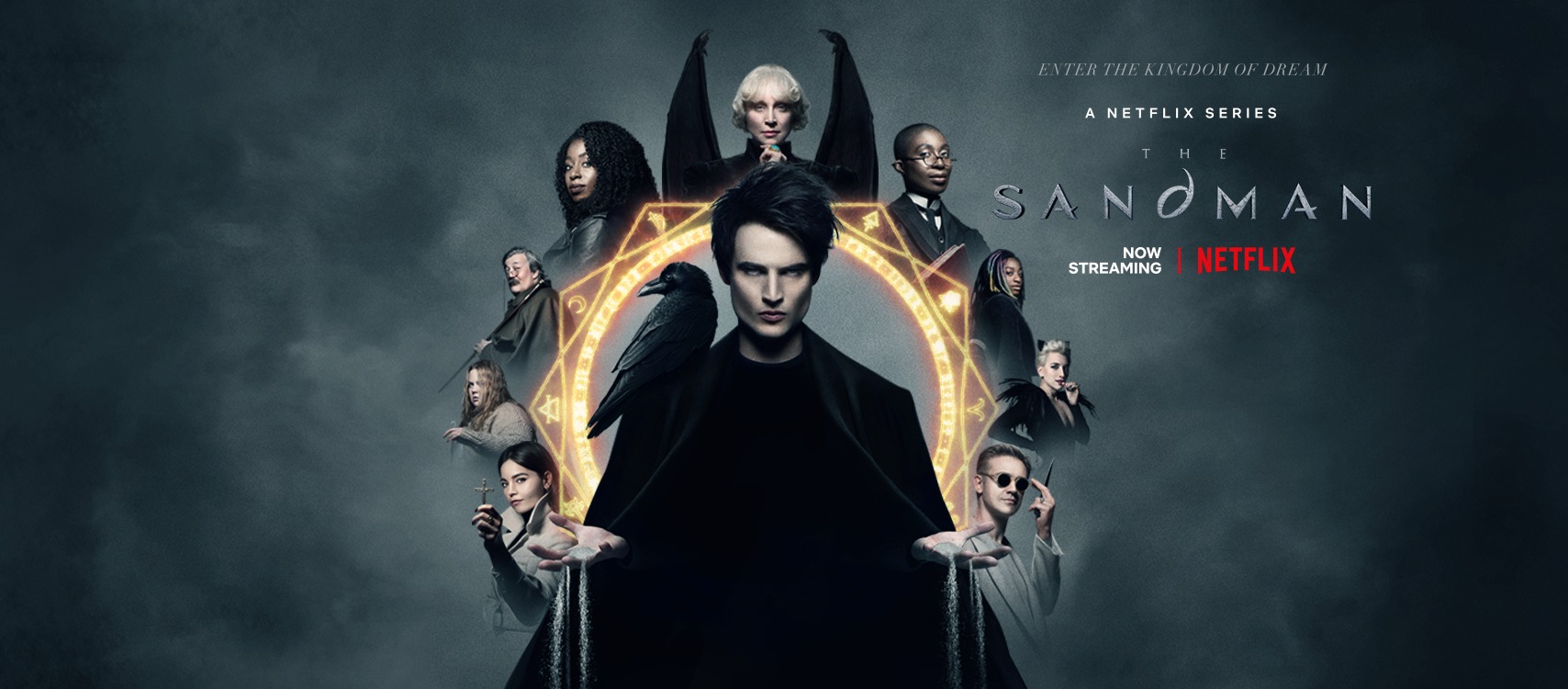
Film Editor Jess Parker reflects on Netflix’s adaptation of The Sandman, noting its ambition in bringing Neil Gaiman’s comic book to life
The Sandman is adapted from author Neil Gaiman’s graphic novel series of the same name. One of the most highly anticipated adaptations of recent years, its transition to the screen had been on the shelf since 1996. Following Netflix’s handling of the text’s character Lucifer Morningstar in Lucifer (2016), the streaming giant has now presented a more comic-accurate adaptation of Gaiman’s magnum opus.
Captured by a mortal and held against his will for over a century, Dream (Tom Sturridge) travels across different realms to reverse the damage caused in his absence. The narrative struggles to find one overarching plot line, favouring a series of successive narratives.
These shorter interactions allow for audiences to experience a broad range of colourful characters, however, I struggled to connect to these characters due to how brief and non-influential some of their appearances were.
Due to the narrative’s hasty form, it is difficult to pinpoint the true antagonist of The Sandman. As we follow Dream on his quest, we flit from Roderick Burgess (Charles Dance) to John Dee (David Thewlis), Lucifer (Gwendoline Christie) to Corinthian (Boyd Holbrook), and finally to Desire (Mason Alexander Park) as a possible nemeses for the Lord of Dreams. Although each displays a stellar performance individually, it is difficult to keep track of who Dream is truly fighting against.
“Each altercation leaves you wanting more and unsatisfied by the lack of a strong hero-villain dynamic
Aesthetically, The Sandman does not disappoint. Seemingly focusing on the contrast between darkness and light, the cinematography exhibits beautiful scenes that capture the ethereal nature of the series. The CGI acts to compliment the cast’s performances, rather than take away from them with its grandeur. It is also important to note the extent of the gore shown, heavily contributing to the show’s 18 age rating. Considering the fact that The Sandman features the likes of diner massacres and serial killer conventions, it does not seem to go overboard with its gruesome displays. The gore successfully shocks and disgusts the audience while not feeling unnecessary to the story unfolding before us, contributing to the dark fantasy aesthetic created in Gaiman’s work.
Sturridge’s portrayal of Dream as a sort of smouldering, broody Robert Smith feels apt for the Lord of Dreams, however, this solemn portrayal can be overshadowed at times by the tour de force of performances that make up the supporting cast. Thewlis’s portrayal of John is unhinged and subdued, forming a juxtaposition of character that successfully captures the mind of this self-righteous murderer. Holbrook’s Corinthian is captivating. He is sadistic yet charming, becoming a firm fan favourite throughout. Christie’s Lucifer is imposing, her calm command contrasting the energetic quirks of Netflix’s previous iteration of Lucifer Morningstar in Tom Ellis (Lucifer 2016).
Although I was disappointed not to see Ellis return to his beloved role, Christie offers a new depiction of the character that hangs up Lucifer’s comedic ways for fear and intimidation. Christie’s Lucifer lends well to the modern Gothicisms of the show. Turning to the less bloodthirsty, Stephen Fry shines in his brief role as Gilbert, also known as Fiddler’s Green. He becomes a kind and supportive figure to Rose Walker (Kyo Ra), encapsulating the good that can be found in the realm of The Dreaming.
“The Sandman is clearly suited for modern times
The world gloriously celebrates queer identities and the global majority, whether they be mortal or endless. This is exemplified in Mason Alexander Park’s non-binary Desire, and Kirby Howell-Baptiste’s endearing Death. Netflix’s choice to present a cast of characters that accurately portray the diverse nature of the world around us and to include LGBTQ+ actors portraying LGBTQ+ characters is a welcome step in the right direction for accurate representation of queer and POC characters within the film and TV industries.
Netflix’s The Sandman is a thoroughly enjoyable parade of fascinating characters and plot lines, that sadly trips itself up in its ambition to follow too many plot lines in succession. The cast members are incredibly well suited to their roles, led by a sulky yet likeable Dream. Netflix has finally brought Gaiman’s graphic novel to life.
Rating: 3.5/5
Check out other Redbrick TV Reviews here:
Review: Better Call Saul – Season Six

Comments